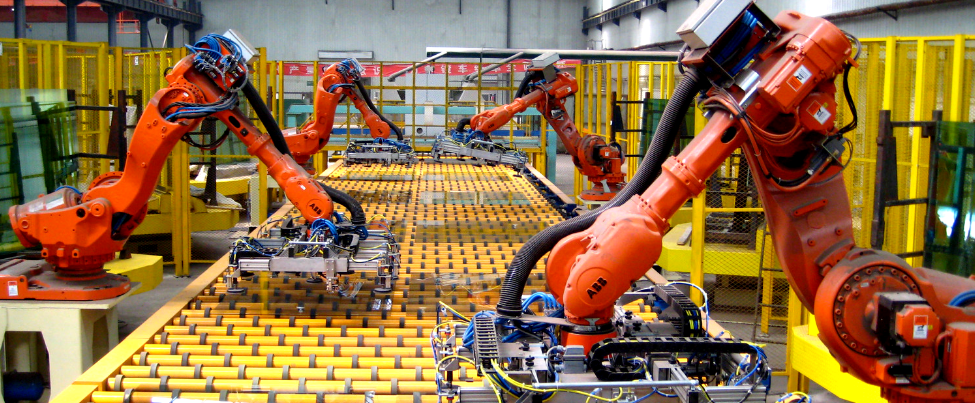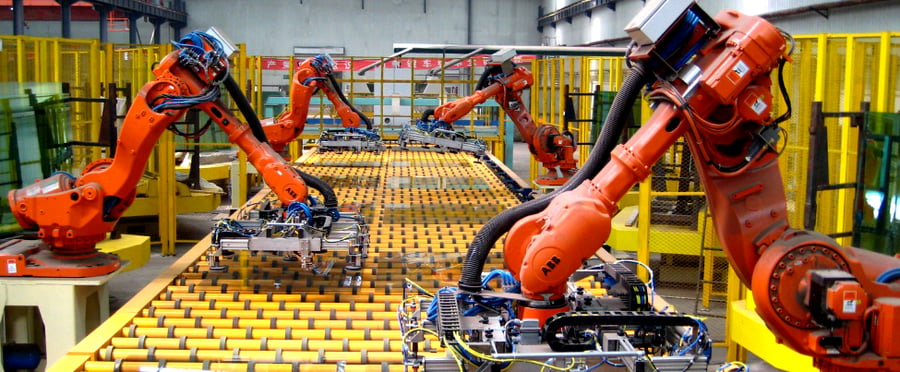How a WMS can extend your warehouse capabilities


When we look at the benefits of a WMS in your warehouse, distribution center, supply chain, or business, we generally look at the tangible, measurable impact that and implementation can have.
There are far more benefits that meet the eye, however, and the ongoing improvements and opportunities seeded by your WMS can change an implementation from simply “the cost of doing business” to a truly worthwhile investment.
The tangible benefits: reductions and improvements that help your bottom line
When you implement a Warehouse Management System or build a business case for the investment into one, you do so with certain metrics in mind. If not, you should.
Using these metrics, and benchmarking against industry standards, you should be able to establish an accurate reduction percentage in:
- Floor space required and space wastage.
- Time spent on tasks throughout your warehouse
- Labour costs and scheduling errors
- Human error, processing errors, and shipping errors.
Likewise, you will be able to see marked improvements in:
- Speed of service
- Order turnaround times
- Delivery accuracy, travel, and time
Aside from the measurable cost reduction in labour, as listed above, you may find certain benefits that cannot be easily measured, but help to improve your productivity and growth:
How a WMS expands your workforce capabilities
Driving employee satisfaction can be difficult, but a WMS used correctly can help you to mitigate the conditions that cause employee unrest and dissatisfaction.
- Accurate scheduling allows you to direct your workforce to tasks that are critical, avoiding a sudden rush or a dip, and reducing misunderstandings and misdirection around tasks. Taking the frustration out of a work-day drives employee satisfaction.
- Real-time data allows you to ensure that your staff is productively employed and managed, and to tackle any problems as and when they arise.
- Automating certain processes saves time, and allows you to schedule time to upskill, train, or nurture your workforce.
- Gives clarity and transparency to your processes, allowing employees from the warehouse floor all the way to your sales department to deliver their tasks, sales, or management accurately and with purpose.
The process changes that add to your warehouse capabilities
Having briefly discussed the transparency and accuracy that your sales team can use to their advantage, we’ll start with the opportunities found in the sales department post-WMS-implementation:
Sales Opportunities
With improved processes comes better sales service and increased customer satisfaction.
- Interlink to customer-facing apps and interfaces for accurate product, order, and recommendation data.
- Ensure that customers get a real-time view of inventory availability.
- If you are a 3PL, your sales team can gauge schedules, availability, and lead times accurately and easily.
Internal Warehouse Opportunities
While many internal warehouse improvements are easily measured, the future impact of a WMS on how you run your distribution center and its associated processes is incredibly broad.
Ongoing optimisation will create new opportunities in every warehouse department, and will illuminate the potential actions to take to expand capabilities as you grow:
- Freight management can help you to identify and implement new shipping opportunities.
- Mobile warehouse management allows greater manager-involvement on the floor, which gives them a view of the warehouse which will help to continually identify workforce opportunities and process improvements.
- Space-savings within your warehouse could enable you to add to your offering, provide a new service, or expand a department – if you choose to maintain your warehouse space.
- Automation means less manual labour, fewer touches, decreased risk of damage to products, and by this token, improves your customer experience and your profitability.
- Regular, real-time reporting gives you a firmer understanding of how your warehouse works, allowing you to decide how your warehouse can be improved to drive business goals.
New and future technology capabilities
A WMS implementation enables the adoption of new technologies, whether in automation, transport management, labour management, robotics, and more.
To see the latest trends, read our blog The Top 5 Smart Warehouse Technologies you Should be Using Today.
Mobile managers and automated processes exist now, and could become infinitely more advanced in future revisions of MHE and mobile technology.
Likewise, the analytic capabilities and machine-learning potential is not yet fully realised – with this avenue open to you, the management and optimisation of your entire supply chain process could open new doors to your business.
Try to imagine where these smart technologies could impact your business right now, vs. in the future after further development and tuning.
Make the enhancements you need to grow with your market, and open your business to new opportunities by taking advantage of every capability-boosting feature in your WMS.
Intangible operational benefits and capability-enhancing opportunities
While many of your operational benefits can be estimated in terms of savings and profit, the smaller, less visible benefits mount up over time.
These include, but are not limited to:
- Reduced walking, which improves speed of delivery to the point that you may find your warehouse can accommodate higher volumes.
- Reduced touches and streamlined procedural steps, allowing you to focus energy on a new product line or location.
- Reduction in paper and manual admin tasks, with a huge potential for future savings and profitability.
- Reduced wastage, of both product and packaging. We’ve all seen a post decrying the excess packaging in deliveries – like this one:

Save yourself money, and drive leaner operations to allow more space and funding for new projects.
- The benefits of accumulated machine learning over a period of months or years gives you more accurate data each cycle, and allows you to continually optimise your warehouse for current business dealings and future endeavours.
- Thanks to your supply chain conformance and lead timing functionality, as well as the added layer of possible quality control, you can refine your procurement strategies to bring your business the right products, at the right time, and open doors to new and improved offerings from reliable and efficient suppliers.
Knowing where the opportunities lie, and how to leverage your WMS to support you in the advancement of your capabilities, gives you a competitive advantage in any industry.
Being able to grow with the market, match pricing and delivery speed, add omnichannel functions as the order platforms increase in number, and enabling a simpler adoption of new services and products is critical to thriving as a distributor, 3PL, wholesaler, or retailer.
Gain more insight into expanded capabilities you can expect from your WMS implementation by downloading our Cambridge Foods case study:
TAGS
- WMS (50)
- Warehouse Best Practice (46)
- Implementing a WMS (29)
- Managing your warehouse (19)
- Omni Channel (18)
- eCommerce (18)
- Blog (16)
- Supply Chain Best Practice (16)
- Mid-Level (8)
- Customer Journey (7)
- Warehouse optimisation (7)
- General Tips (5)
- Industry General (5)
- Information (5)
- managing your Supply Chain (5)
- saudi arabia (5)
- Trends (4)
- smart warehouse (4)
- 3PL (3)
- News (3)
- ERP (2)
- Entry-level (2)
- ROI (2)
- Case Study (1)
- OMS (1)
- Picking (1)
- Press Release (1)
- Solution-Specific (1)
- Transport Management System (1)
Take A Look At The Results Of A Successful WMS Implementation.
See how Tarsus Distribution, in collaboration with SCJ boost overall efficiency by 60%





